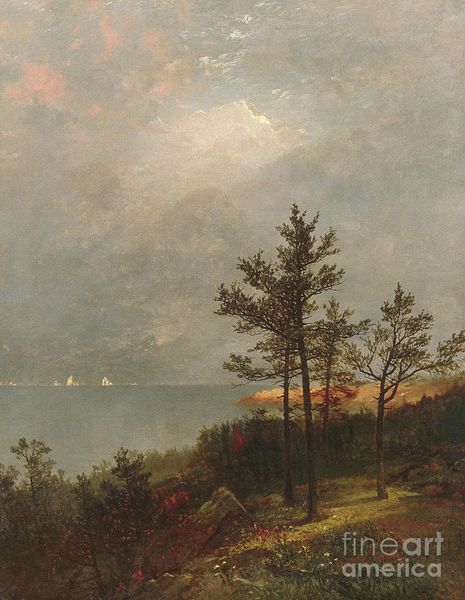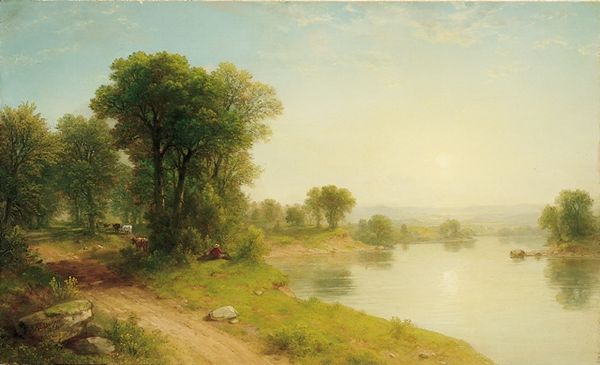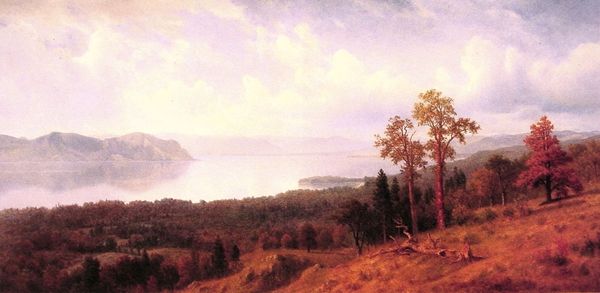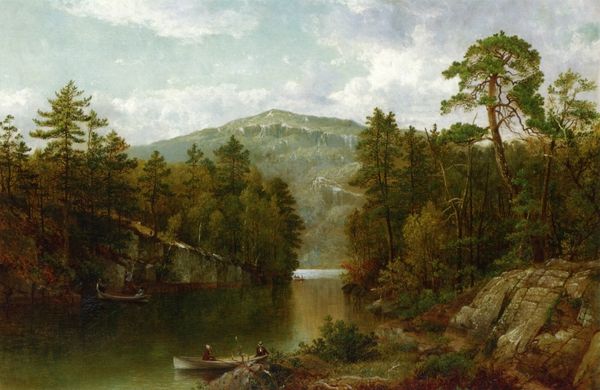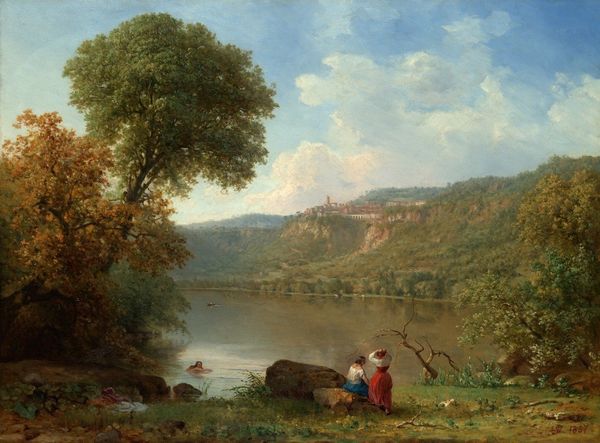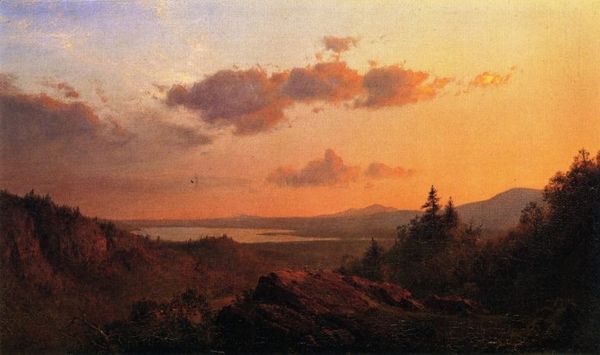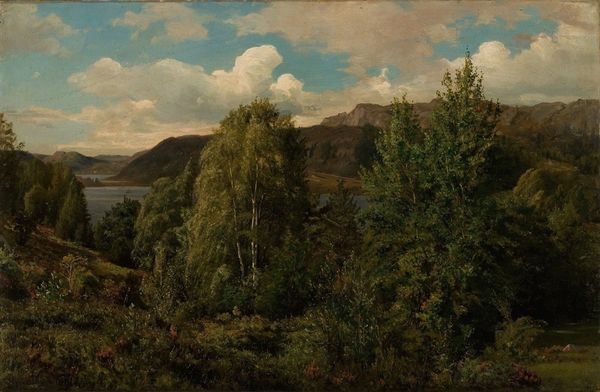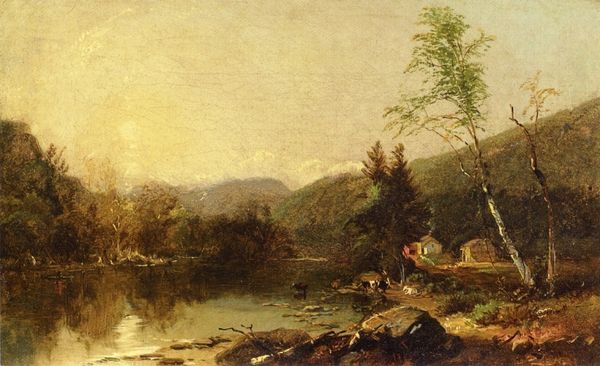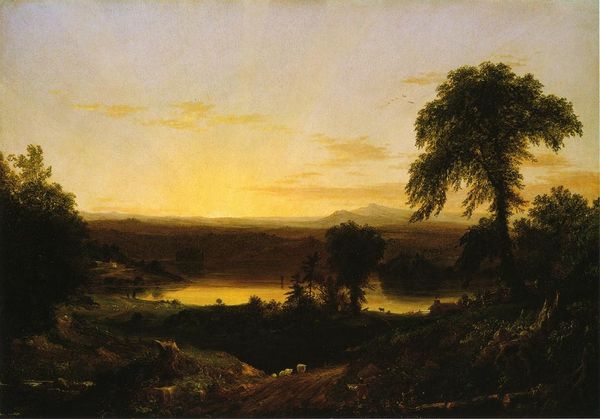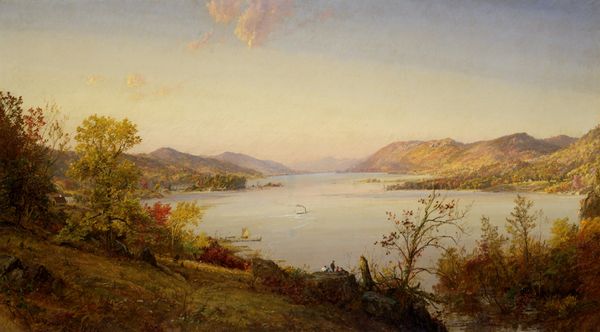
painting, plein-air, oil-paint
#
tree
#
impressionistic
#
sky
#
painting
#
plein-air
#
oil-paint
#
landscape
#
impressionist landscape
#
oil painting
#
romanticism
#
hudson-river-school
#
cityscape
#
realism
Copyright: Public domain
Editor: William Hart's "Spring Day on the Hudson," done with oil paint, presents a serene landscape. I'm immediately drawn to the texture, that impasto feel makes the foreground so tactile. How can we interpret this artwork, considering its medium and subject? Curator: Given its materials and subject, it’s crucial to investigate the Hudson River School's context. These weren't just landscapes; they were assertions of American identity, tied to the burgeoning industries of the time. How does this depiction of 'nature' possibly gloss over resource extraction, for instance, or the displacement of indigenous communities facilitated by the very waterways celebrated? Editor: So, the "serene landscape" isn't so simple then? Could the way Hart applies the paint, those deliberate strokes, suggest a tension between romantic idealism and the realities of industrial development? Curator: Precisely. Think about where Hart sources his pigments, brushes, and canvas. It all circles back to global trade networks and, arguably, colonial enterprises. Even his 'plein-air' approach necessitated specific tools and resources, allowing for this idealized view to be commodified. Does understanding this affect your initial reading? Editor: Definitely. It makes me wonder if Hart was consciously addressing these issues or if his art unwittingly became part of the narrative of progress, ignoring the cost. Curator: That’s precisely the question that situating the material production of the painting provokes. Thinking through such relations enables a crucial questioning of national myths through artistic practice. Editor: Thanks. I’ll never look at a landscape the same way again. Curator: Nor should you. Materiality matters.
Comments
No comments
Be the first to comment and join the conversation on the ultimate creative platform.
